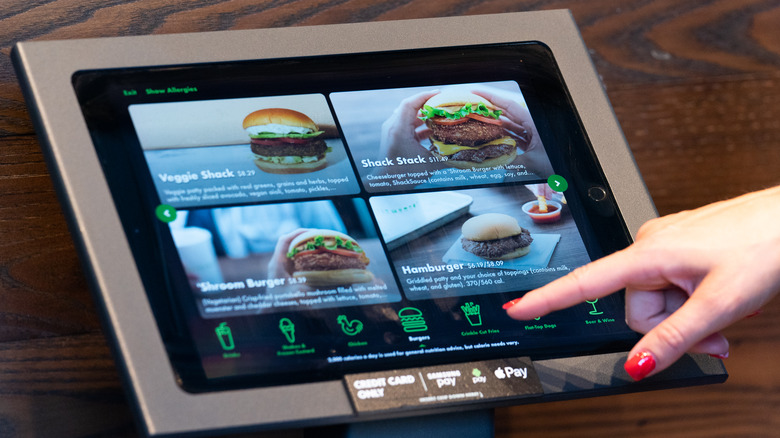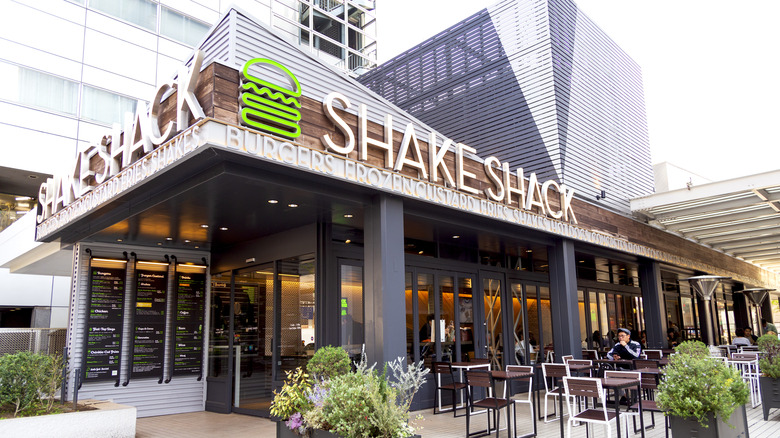Kiosks Have Been A Key Ingredient Of Shake Shack's Booming Sales
Despite economic headwinds affecting the food industry across the board, Shake Shack's profits are on the rise. This week, the company shared its most recent earnings report for 2023 and showcased its highest Q1 total revenue since the COVID pandemic began, totaling $253 million – up from $203 million in the first quarter of 2022.
The chain has taken a number of steps aimed at growing profitability, such as slightly increasing prices on menu items to match rising restaurant costs and retaining more employees. And while burgers and shakes may be the bread and butter of Shake Shack's sales, the secret ingredient of its recent success actually comes in the form of integrated technology: kiosks.
The touch-screen kiosks have proved incredibly valuable when it comes to streamlining customer experience and driving sales. Shake Shack's Chief Financial Officer Katherine Fogertey explained to QSR Magazine that a restaurant might have as many as six of the devices positioned near a couple of cashiers, and some customers immediately gravitate to the kiosks.
Back in November, the restaurant chain announced plans to outfit all of their locations with self-order kiosks by the end of 2023 and has already installed them in 90 restaurants since the beginning of last year (per QSR Magazine). It seems the push is quite literally paying off. The machines have become the highest profit channel for the restaurant and have led to a more than 20% increase in in-store sales compared to Q1 2022.
Why kiosks are so profitable
The burger chain debuted its first cashless, self-service kiosks at a New York City outpost in 2017, which aimed to give customers greater control over their restaurant experience while achieving better operations and kitchen output, according to a press release at the time. Although that location featured kiosk-only ordering, the machines have since been added as an alternative ordering option across Shake Shack restaurants. The touchscreen devices have appealed to customers while driving sales.
As Fogerty has explained, the visual capabilities of the kiosks seem to be inspiring extra add-ons and orders of premium limited-time menu items, leading to higher average check prices. The kiosks, along with digital sales, also account for 75% of sales in locations where they are installed, pointing to an overall customer preference. Indeed, research has shown that millennials and Gen Z consumers favored kiosk ordering over face-to-face interactions in general, an upwards trend since kiosks have been adopted by several other fast food chains over the past few years, including McDonald's, Taco Bell, and KFC.
But their appeal to guests isn't the only reason kiosks have proven so profitable at Shake Shack. The self-order machines have also allowed the restaurants to run more efficiently through staffing issues and help to save on labor costs – the latter of which, of course, has raised concerns about the future job security of fast food workers. But with profits on the rise, Shake Shack's investments in automation might not slow down anytime soon.

